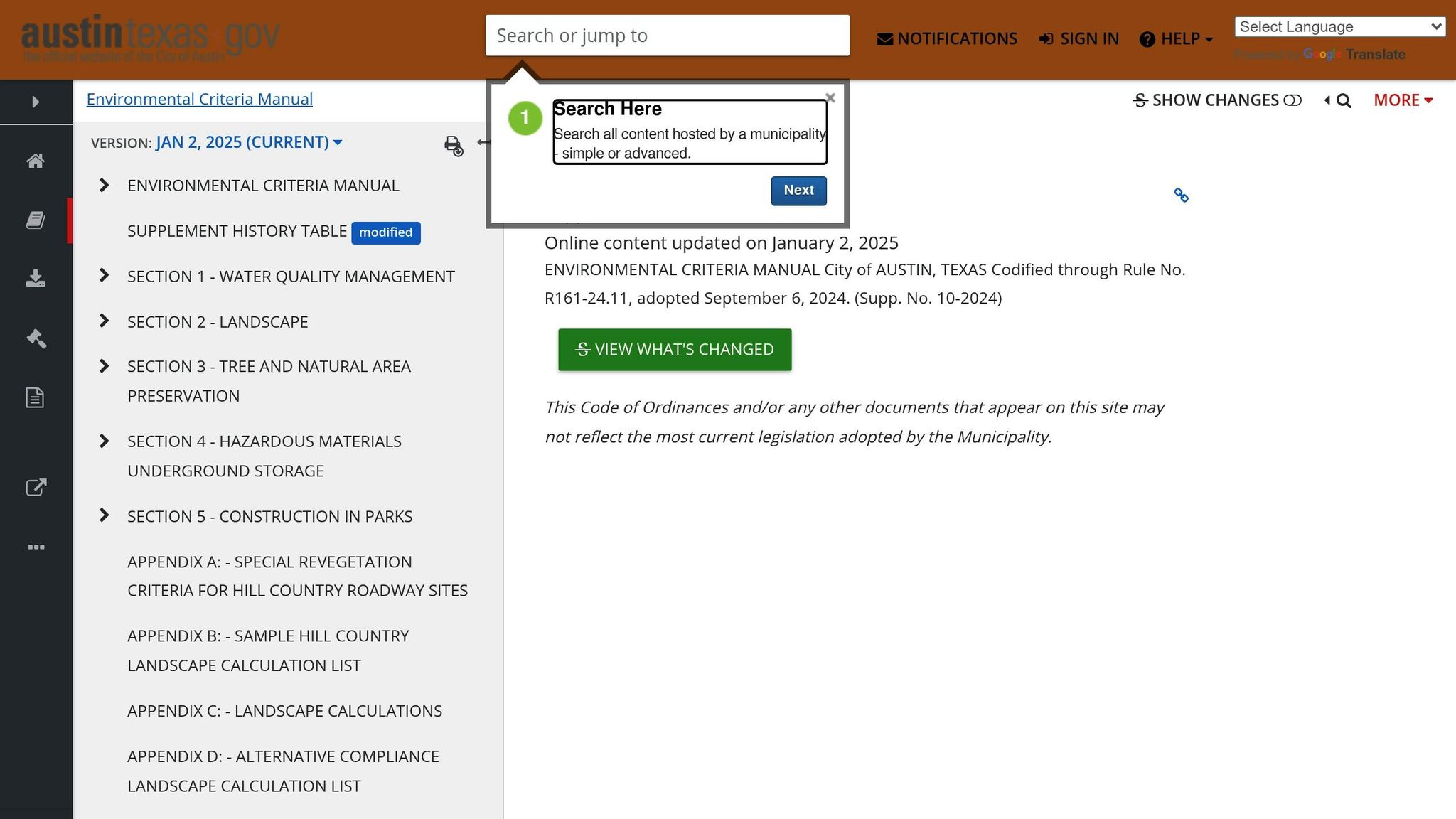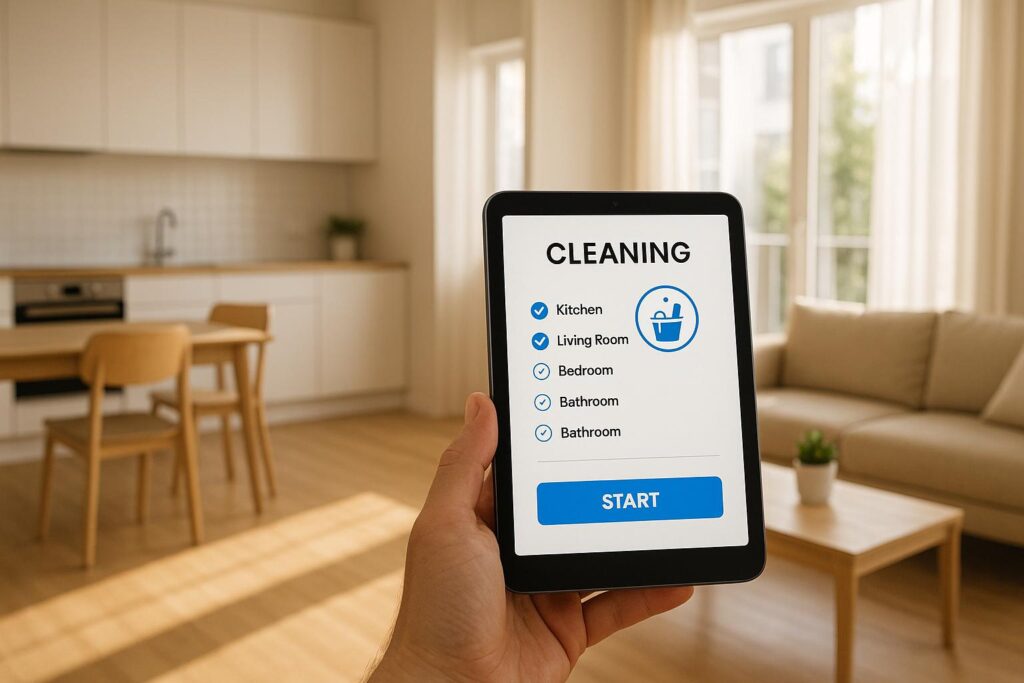Austin’s water quality rules are essential for protecting drinking water, preventing flooding, and balancing urban growth with natural resource conservation. Here’s what you need to know:
- Purpose: Safeguard drinking water, ecosystems, and property values by managing stormwater, preventing erosion, and controlling pollution.
- Main Challenges: Austin’s limestone terrain, rapid urban expansion, and flash flood risks increase runoff and pollution threats.
- Rules to Follow: Obtain permits for land disturbance, follow stormwater management guidelines, and comply with inspections at key stages.
- Key Practices: Use sediment barriers, maintain stormwater systems monthly, and keep records for at least three years.
- Resources: The City of Austin Watershed Protection Department and the Austin Local Team offer guidance and connections to experts.
These steps ensure compliance, protect water resources, and support Austin’s community. Read on for detailed rules, guidelines, and tips.
Main Water Quality Rules in Austin
Technical Guidelines Manual
The Technical Guidelines Manual provides detailed instructions to manage Austin’s unique challenges, like flash floods and runoff in karst terrain. It focuses on:
- Project thresholds and when water quality controls are required
- Specific design standards for temporary and permanent Best Management Practices (BMPs)
- Requirements for creating a Stormwater Pollution Prevention Plan
- Inspection and maintenance protocols, including templates for record-keeping
- Erosion and sediment control measures tailored for construction sites
Next, we’ll look at how Austin’s local rules compare to state-level water quality regulations.
The History of Austin’s Watershed Protection Ordinances
Rules for Property Owners and Developers
To meet Austin’s Water Quality Code, property owners and developers must secure permits and schedule inspections. Here’s a closer look at how these requirements are enforced through permits and inspections.
Required Permits
Certain activities, like land disturbance, stormwater management, or work in environmentally sensitive areas, require permits under the Austin Water Quality Code. Check the Technical Guidelines Manual for specific thresholds and detailed application steps.
City Inspections
The Watershed Protection Department conducts inspections at three key stages: pre-construction, after installing BMPs (Best Management Practices), and final stabilization. These inspections ensure that both temporary and permanent BMPs are installed and maintained correctly. To speed up the approval process, keep erosion, sediment, and stormwater records in line with the provided plan templates.
sbb-itb-4c99469
Water Quality Protection Methods
Once you’ve secured the necessary permits and completed inspections, it’s time to put these on-site practices into action to safeguard water quality.
Preventing Pollution on the Property
Set up sediment barriers around work areas, stabilize site entrances, and cover exposed soil until permanent vegetation grows. Store hazardous materials in sealed containers, ensure spill kits are available, and train your team on how to handle spills effectively.
Maintaining Stormwater Systems
Check stormwater facilities every month for issues like sediment buildup, erosion, clogged inlets, or stressed vegetation. Clear out debris, fix erosion problems, and address vegetation concerns immediately to keep the system functioning properly.
Keeping Records
Document inspection findings, maintenance work, and staff training sessions. Keep these records on file for at least three years, as they may be needed for city reviews.
Up next: find out how city resources and contacts can assist you.
Help and Information
If you’re looking for extra support beyond city contacts, the Austin Local Team is here to help make compliance easier.
Austin Local Team Services
Alongside the Watershed Protection Department’s resources, the Austin Local Team provides local expertise tailored to your needs. They specialize in connecting property owners and developers with professionals who understand Austin’s water quality regulations. Here’s what they offer:
- Personalized agent connections for development or property-related assistance.
- Free home valuation that incorporates water quality improvements as part of a comparative market analysis.
- Access to contractors familiar with Austin’s specific water quality requirements.
- A trusted network to help simplify compliance and safeguard your investment.
Summary
Property owners and developers in Austin need to follow city water quality regulations. This includes meeting baseline standards, managing stormwater properly, obtaining necessary permits and inspections, and maintaining records for at least three years. These steps help protect local waterways and prevent penalties. For guidance, reach out to the City of Austin Watershed Protection Department and work with experienced professionals to ensure compliance and support the community’s water quality efforts.







